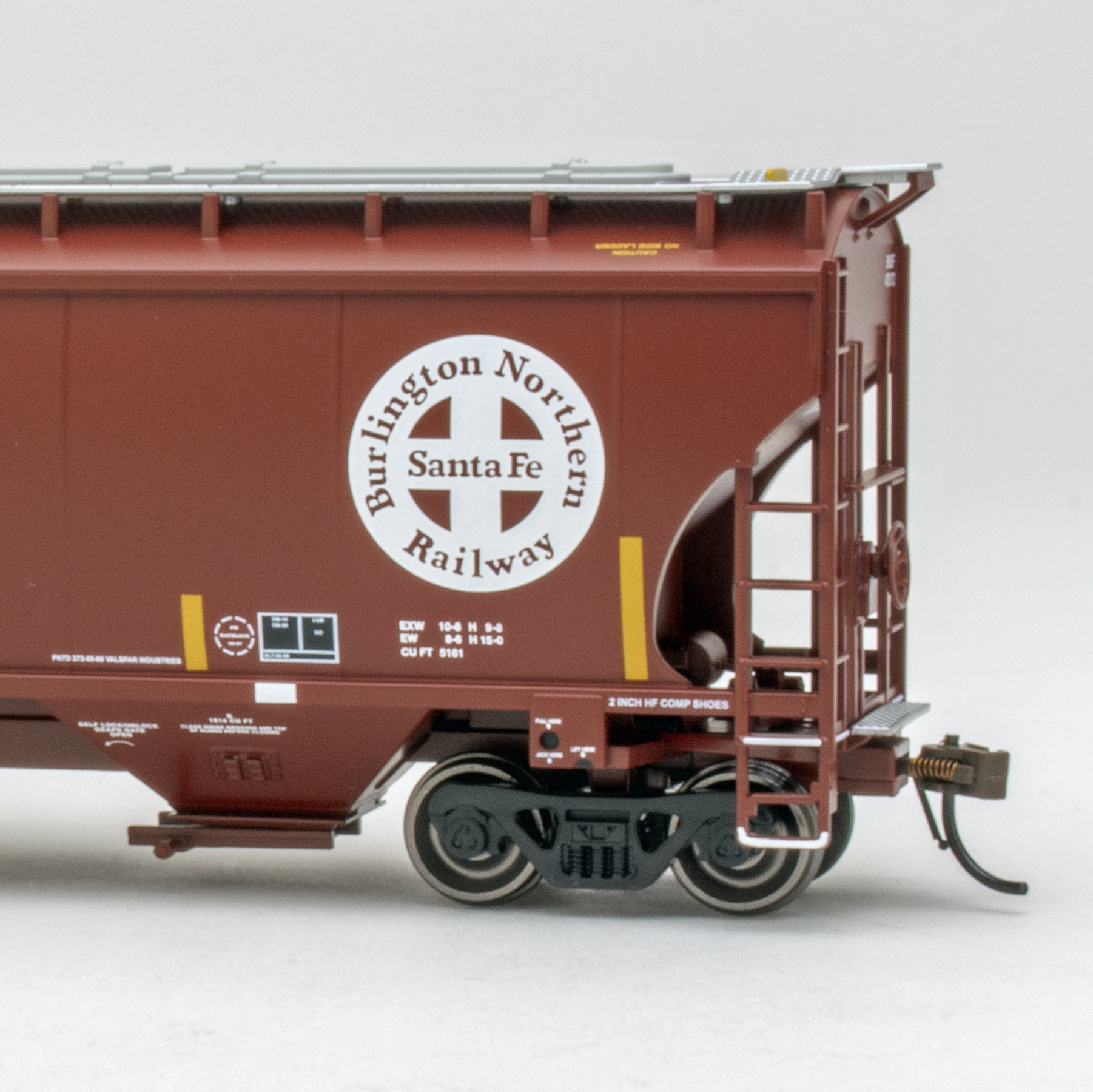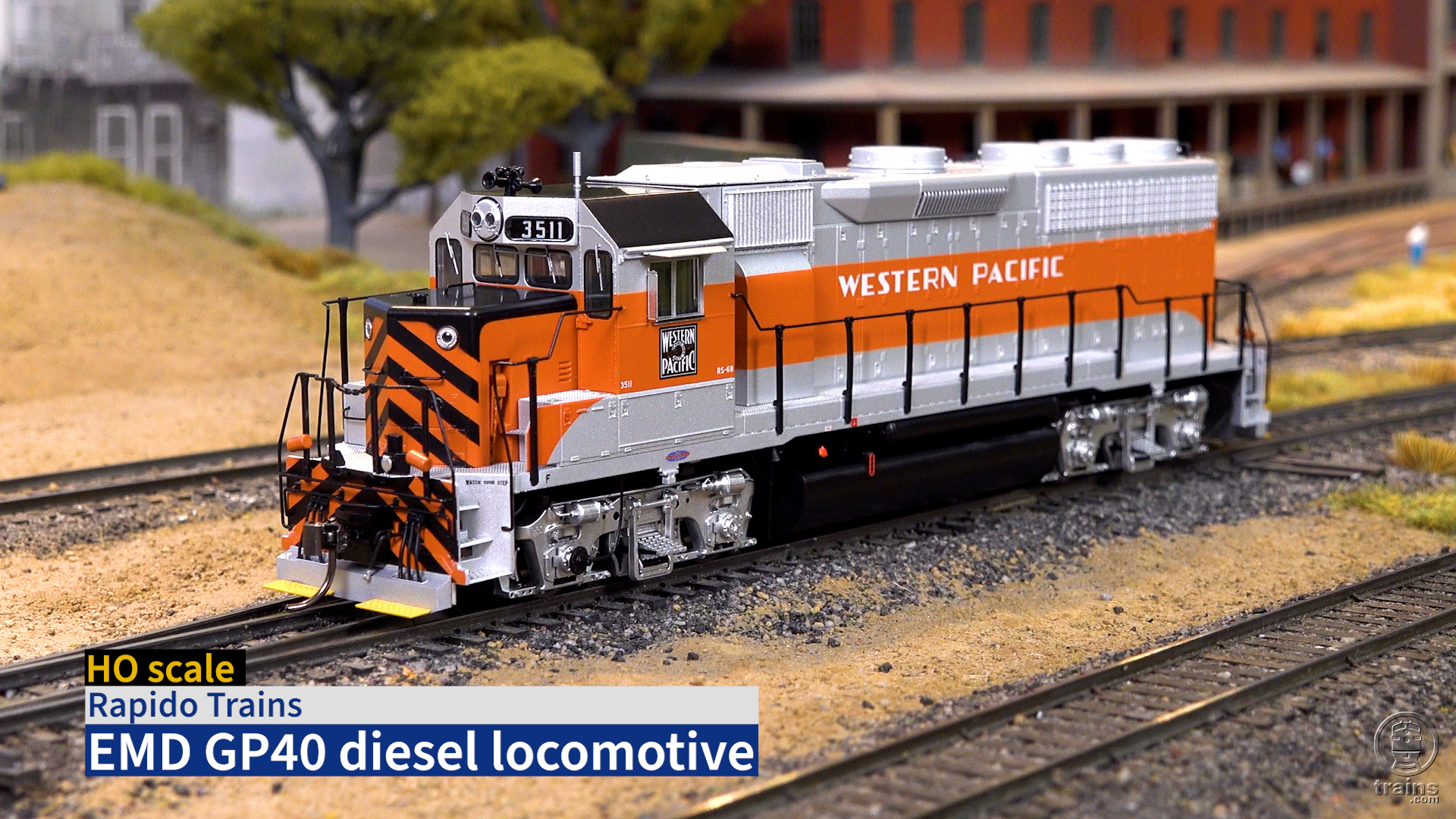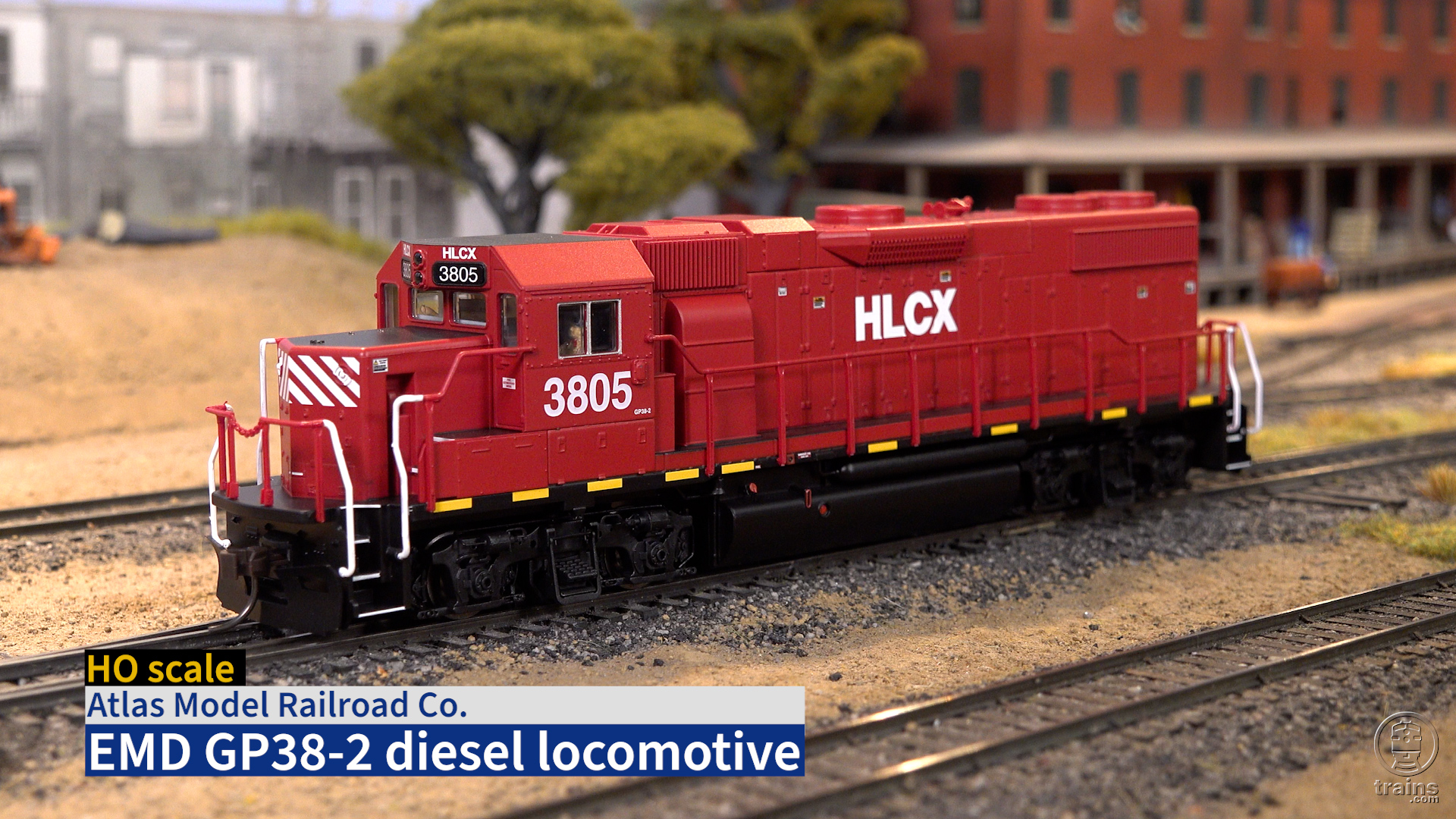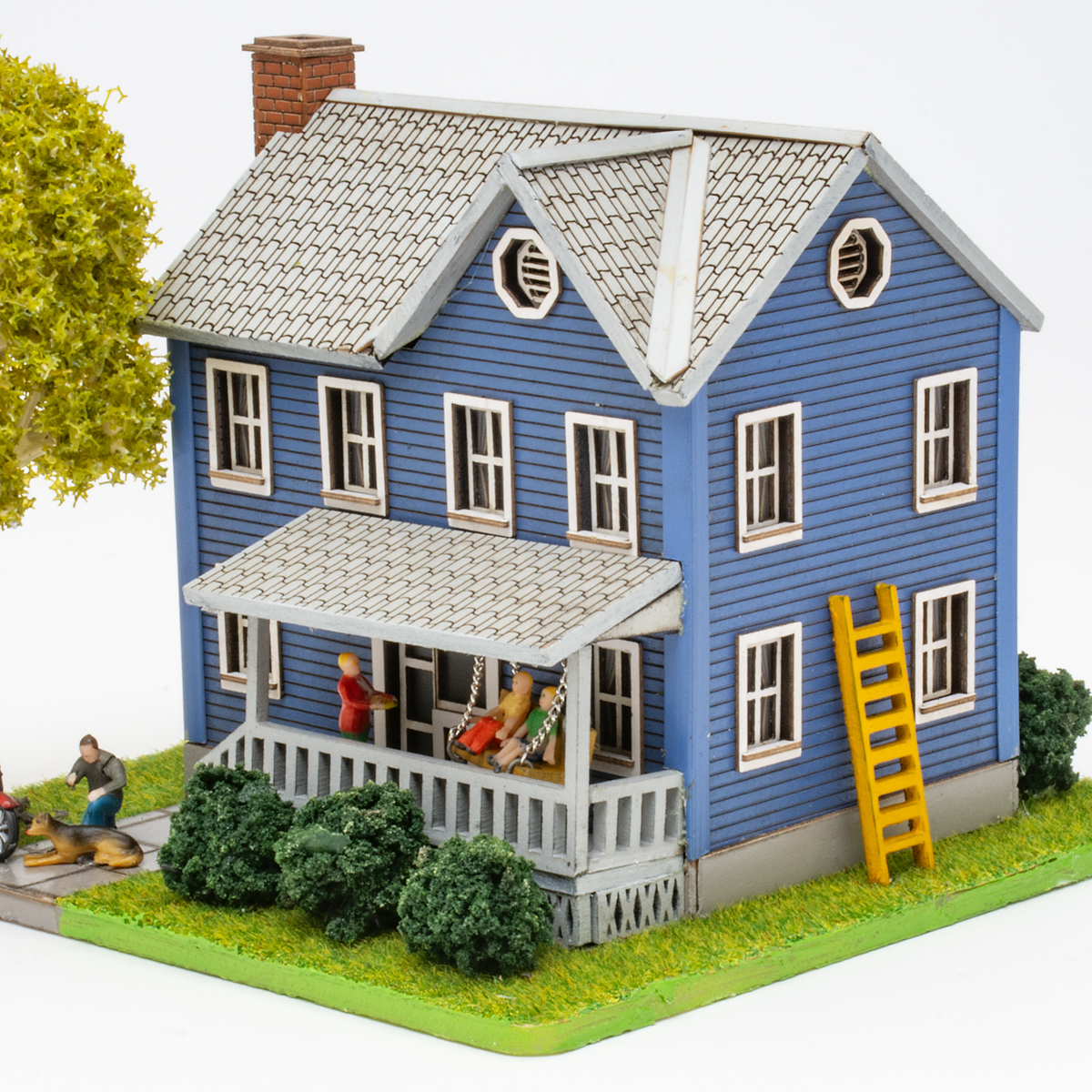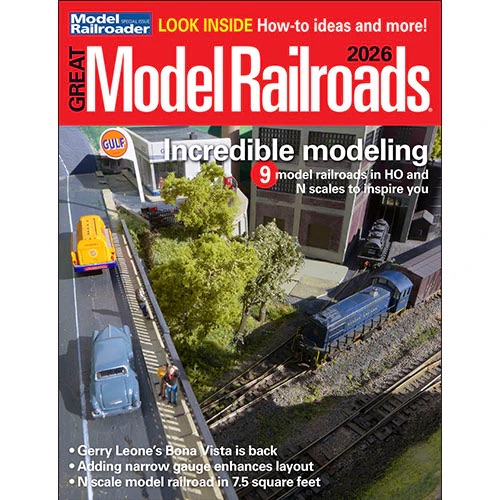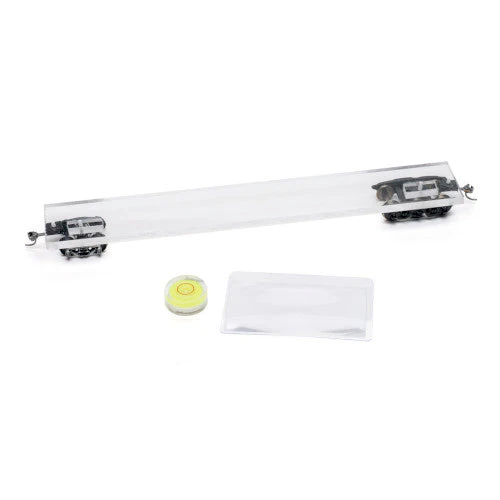
An Association of American Railroads (AAR) 50-ton flatcar is the latest body style from Kadee Quality Products Co. The newly tooled HO scale model features injection-molded plastic construction, a detailed underbody, and No. 158 whisker couplers.
Prototype history
The AAR recommended three 50-foot flatcar designs in 1941. In his book Freight Cars of the ’40s and ’50s (Kalmbach Books, 2015), Jeff Wilson wrote, “The 50-ton, 53′-6″ AAR riveted design was based on a Union Pacific car built by Pullman-Standard (Class F-50-11). The car had fishbelly sides with a single taper and 15 stake pockets on each side (with the middle stake slightly to the right of center on each side).”
The sample we received is decorated as Nickel Plate Road 3038, part of the railroad’s 3000 through 3049 series. The full-size cars were built under Lot 5720-A by Pullman-Standard Car & Manufacturing Co. in Michigan City, Ind., in November 1942. In 1958, 24 cars from this series were modified to haul trailers. Examples of these cars were still on the roster when NKP merged with Norfolk & Western in 1964. Some cars survived in Nickel Plate Road paint into the 1980s.
Model features

The plastic body on the Kadee flatcar consists of the sides, ends, center sills, body bolsters, and draft-gear boxes. Finely rendered plastic grab irons are located on the sides and ends at all four corners. Following prototype practice, the car has a brake wheel on a drop staff. Yes, you can raise and lower it on the model. Nice touch!
The stake pockets are molded on a plastic strip. Standoffs between the strip and pockets fit into notches on the top of the sides.
The plastic deck is tan with wood grain and fastener detail. A metal weight, painted a similar color, is attached to the bottom of the deck. The color, along with flooring and stringer detail, help it blend into the model.

The crossties are part of a separate plastic casting that fits between the center sills. The air reservoir and 3⁄4″ auxiliary and emergency reservoir pipes are part of the casting.
Flexible engineering plastic was used for the rest of the brake system. One casting has the brake pipe, air hoses (with angle cock detail), and uncoupling levers. Another has the brake cylinder, control valve, levers, brake rods, and related pipes. The plastic draft-gear box covers are attached with screws.
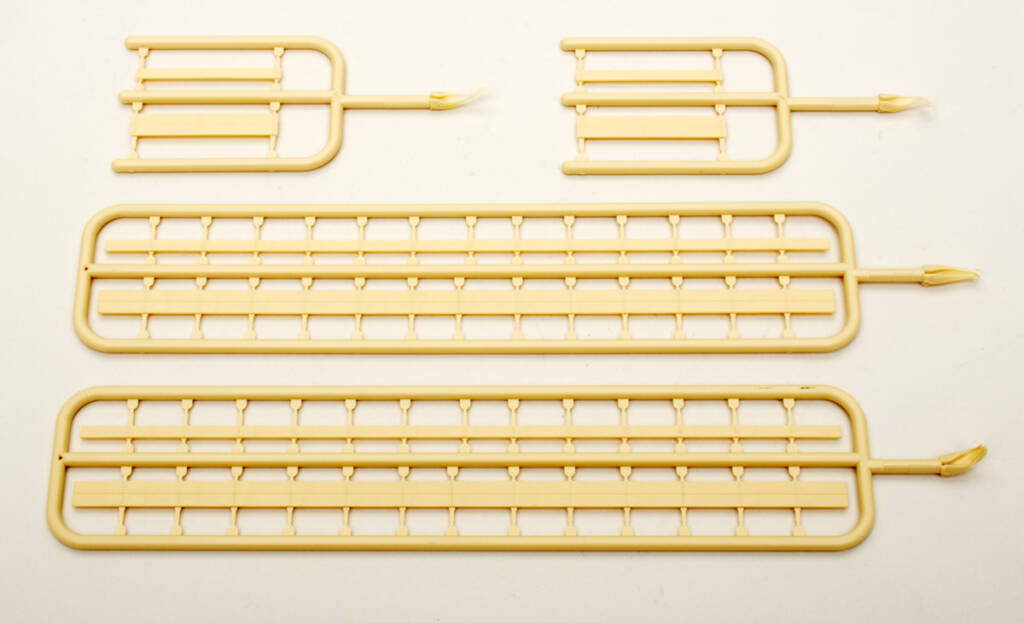
The Kadee flatcar also has optional, modeler-installed parts, including stake poles and single- and double-board sides. All of the parts, molded in tan similar to the deck color, are attached to sprues. I’d recommend tweezer-style sprue cutters to detach the parts.
A closer look
Our review sample is neatly painted black with opaque white graphics. The placement of the road name, reporting marks, road number, and other data matches a prototype photo of car 3038 that I found on the Nickel Plate Road Historical & Technical Society website.
The flatcar is equipped with Kadee’s Bettendorf 50-ton self-centering trucks with a two-piece split bolster. Infor-mation on the Kadee website states that this design provides “more efficient truck equalization [and] reduced axle friction for greater rolling performance.”
The screw-mounted trucks are made from High Gravity Compound. The sideframes have raised foundry data and crisply defined details. The 33″ ribbed-back wheels, mounted on plastic axles, are properly gauged. The face of each wheel has raised lettering that reads Association of Manufacturers of Chilled Car Wheels A.R.A. 1921.
Body-mounted Kadee No. 158 whisker couplers are installed at the correct height. At 2.3 ounces the flatcar is 2.4 ounces too light per National Model Railroad Association Recommend Practice 20.1.
Prototype drawings of the 3000-3049 series of flatcars were published in Nickel Plate Road Freight Car Diagrams (TLC Publishing Inc.) The ready-to-run flatcar matches or is within scale inches of all printed dimensions.
For real-world testing, I put the model in a train on our Winston-Salem Southbound layout. The car performed without issue, comfortably navigating the No. 4 turnout and 30-degree crossing that serve Atlas Supply Co.
For nearly 80 years, Kadee has been producing quality couplers, trucks, and freight cars, and the 50-ton AAR flatcar lives up to that reputation. Whether you put it on the rails straight from the box or install the user-added parts, this model will certainly be a standout in your freight car fleet.
Facts & features
Price: $54.99
Manufacturer
Kadee Quality Products Co.
673 Ave. C
White City, OR 97503
kadee.com
Era: November 1942 to 1980s (as decorated)
Road name: Nickel Plate Road
Features
- 33” metal wheels mounted on plastic axles, correctly gauged
- Body-mounted No. 158 whisker couplers, at correct height
- Minimum radius: 18”
- Weight: 2.3 ounces, 2.4 ounces too light per National Model Railroad Association Recommended Practice 20.1






